I. Drug Stability Studies: The selection of a drug formulation is based on a comprehensive analysis of the physicochemical properties, biological characteristics, and clinical application needs of the drug. These aspects are also crucial in the development of formulations and processes. Quality research and stability testing form the essential scientific foundation for formulation screening and process optimization. The stability of drug preparations can be affected by chemical reactions between the drug and other substances, such as excipients, dosage forms, containers, or external factors like air, light, and moisture. Impurities, such as metal ions, intermediates, or by-products, can also cause degradation. Factors that influence the rate of these reactions include temperature, catalysts, moisture, and light. This can be summarized into several aspects: (1) Temperature: For every 10°C increase, the reaction rate increases by 2–3 times. (2) Moisture: Water often acts as a necessary medium for chemical reactions. In many cases, without water, the reaction would not occur. Some drugs with poor chemical stability, such as aspirin, potassium or sodium salts of penicillin, acetylcholine chloride, and ferrous sulfate, may absorb moisture on their surfaces, forming an invisible liquid film that leads to decomposition. (3) Acid-base catalysis: To determine whether a drug is catalyzed by a buffer, it's important to keep the ionic strength constant while varying the buffer salt concentration (without changing the ratio to avoid pH shifts). If different concentrations of the buffer affect the drug’s degradation, this indicates acid-base catalysis. To reduce this effect, the buffer should be kept at the lowest possible concentration. (4) Light: Like heat, light provides the activation energy required for chemical reactions. Certain reactions, such as oxidation-reduction, ring rearrangement, or hydrolysis, may occur or accelerate under specific wavelengths of light, such as the hydrolysis of pentyl nitrite. Therefore, studying the water adsorption behavior of materials under different humidity conditions is vital for drug stability research. II. Controlled Release of Multi-component Systems in Polymers: Controlled release refers to the binding, complexing, or encapsulation of a drug or substance with a polymeric carrier before administration into a biological system. The active molecule is then released at a controlled rate through diffusion, osmosis, or other mechanisms, ensuring optimal therapeutic effects. Controlled release offers advantages such as reduced side effects, improved drug stability, and higher utilization efficiency. Water plays a significant role in molecular transport within polymer systems. According to the theory of water adsorption in polymers, the distribution of water in the polymer matrix is crucial for controlling the release process and managing the hydrophilic-hydrophobic balance in the system. III. Active Pharmaceutical Ingredients (APIs) and Excipients: 1. APIs: Certain physicochemical properties of APIs can impact the quality of the final formulation and the production process. These include color, odor, pH, pKa, particle size, crystal form, optical rotation, optical isomers, melting point, moisture content, solubility, oil/water partition coefficient, and solvent or hydrate state. Additionally, the stability of APIs under solid or solution conditions under light, heat, humidity, and oxygen must be considered. For example, the solubility of a drug may affect its performance and analytical methods, making it a key factor in formulation design. Particle size can influence the dissolution of poorly soluble drugs, suspension in liquids, content uniformity, and even bioavailability and clinical efficacy. 2. Excipients: The physicochemical properties and quantities of excipients also affect the quality of the formulation. Properties such as molecular weight and distribution, substitution degree, viscosity, appearance, particle size and distribution, flowability, moisture content, and pH can all have an impact. For instance, changes in the particle size and density of diluents may affect the content uniformity of solid dosage forms. Variations in the molecular weight or viscosity of polymers used in sustained-release formulations can significantly affect drug release behavior. Moisture is particularly important for solid dosage forms. For some chemically unstable drugs, moisture adsorbed on the surface can create a thin liquid film, leading to degradation. IV. Enzyme Preparations: Enzyme preparations include single-enzyme and multi-enzyme formulations, with most modern applications using multi-enzyme products. The relationship between moisture content and water activity in enzyme additives is described by the water adsorption isotherm. Although this relationship is not linear, generally, the higher the moisture content, the higher the water activity. At higher water activity levels, enzyme protein denaturation becomes more pronounced. For example, when moisture content drops to 10%, lipase remains active until the temperature reaches 60°C; however, at 23% moisture, significant inactivation occurs at room temperature. For most enzymes, keeping the water activity below 0.3 under near-neutral pH and low temperature can prevent spoilage due to protein denaturation and microbial growth, thus maintaining high enzymatic activity. Traditional methods for studying material moisture adsorption have several limitations: long testing time, imprecise results, and high workload. These constraints limit the widespread study of moisture adsorption properties. Beishide Instrument Technology (Beijing) Co., Ltd.'s 3H-2000PW Multi-station Gravimetric Vapor Adsorption Analyzer is used for fast and accurate measurement of water vapor adsorption on solid surfaces. Key features include: - Sensitivity/range: 1 μg/2000 mg (0.1 μg/200 mg available); - Dynamic weighing range: 10–1000 mg (0.1 μg: 10–100 mg); - Simultaneous sample analysis: 2, 4, or 8 samples; - Test gas types: water vapor, organic vapor, various gases; - Liquid storage capacity: 180 ml; - Vacuum degassing temperature range: ambient to 400°C, with multi-stage programmed heating to prevent sample flying and protect the sample; - Vapor pressure control range: 0.01%–98%; - Supports blank sample synchronization testing to reduce errors and improve accuracy; - Advanced automatic distillation purification system for high-purity vapor source; - Real-time saturation vapor pressure testing function with high precision; - Equipped with a liquid nitrogen cold trap to prevent vapor from polluting the vacuum system and improve vacuum level; - Full temperature-controlled device ensures no cold spots in the entire adsorption system; - All piping and valves use oil-resistant and corrosion-resistant designs; - Vapor and gas testing switching; - Automatic gas tightness detection process for intelligent instrument evaluation; - Automatic pressure recovery after testing to prevent sample splashing; - Clear graphical interface for full hardware control; - Detailed operation logs with second-level timing for reliability and after-sales support; - Voice prompts for each test procedure; - Automatic email notification function for remote monitoring; - Global procurement with critical components imported; - Dimensions: 110 cm (H) × 100 cm (W) × 70 cm (L), Weight: 200 kg. Main functions: - Vapor adsorption/desorption isotherms; - Vapor isobaric adsorption/desorption rates; - Gas adsorption/desorption isotherms; - Gas isobaric adsorption/desorption rates; - Specific surface area analysis; - Pore volume and pore size analysis; - Vacuum degassing thermogravimetric analysis; - Reagent distillation and purification. Report content: - Analysis summary report; - Vacuum degassing thermogravimetric report; - Adsorption/desorption isotherm; - Adsorption/desorption rate; - BET single-point specific surface area; - Langmuir specific surface area; - BJH mesopore analysis; - T-plot micropore analysis; - D-R micropore analysis; - HK micropore analysis; - SF micropore analysis. Patents for 3H-2000PW Multi-station Gravimetric Vapor Adsorption Analyzer: - Patent Title: Gravimetric Physical Adsorption Instrument, Patent No. 0 – Protection Points: - Structure using gravimetric method to determine gas and vapor adsorption/desorption quantity; - Multi-sample testing structure; - Switching structure between vapor and gas adsorption; - Saturation vapor pressure testing structure. - Patent Title: Gravimetric Physical Adsorption Instrument Preventing Vacuum System Contamination, Patent No. ZL201420156173.8 – Protection Points: - Cold trap device to prevent vapor contamination of the vacuum system; - Integrated cold trap device as part of the gravimetric vapor adsorption instrument; - Removal of high-boiling-point vapor molecules to improve vacuum level. - Patent Title: Heating Degassing Furnace, Patent No. ZL201420148362.0 – Protection Points: - Heating furnace with vacuum insulation layer; - Combination of vacuum insulation and high-temperature insulation cotton improves thermal efficiency, reduces heat loss, and minimizes temperature impact on nearby components. - Patent Title: Distillation Purification Device and Gravimetric Physical Adsorption Instrument, Application No. 7 – Protection Points: - Gravimetric vapor adsorption instrument with a distillation purification device for liquid organic reagents; - Integrated distillation purification device as part of the gravimetric adsorption instrument; - Fully programmable automatic distillation purification.
Products Description :
TTN Power inverter offer superior quality true sine wave output, it is designed to operate popular power tools and sensitive loads. Connect pure sine wave inverter with battery terninals, then you can get AC power for your appliances, the AC output identical to, and in some cases better than the power supplied by your utility.
Products Features :
- Input & output fully insolated.
- High Surge: high surge current capability starts difficult loads such as TVs,camps,motors and other inductive loads.
- Grounding Protection: there is terminal in front panel, you can grouding the inverter.
- Soft start: smooth start-up of the appliances.
- Pure sine wave output waveform: clean power for sensitive loads.
- AC output identical to, and in some cases better than the power supplied by your utility.
- Cooling fan works automatically when inverter becomes too hot, it turns off automatically when the temperature is reduced.
- Low total harmonic distortion: below 3%.
- Two LED indicators on the front panel showthe working and failure state.
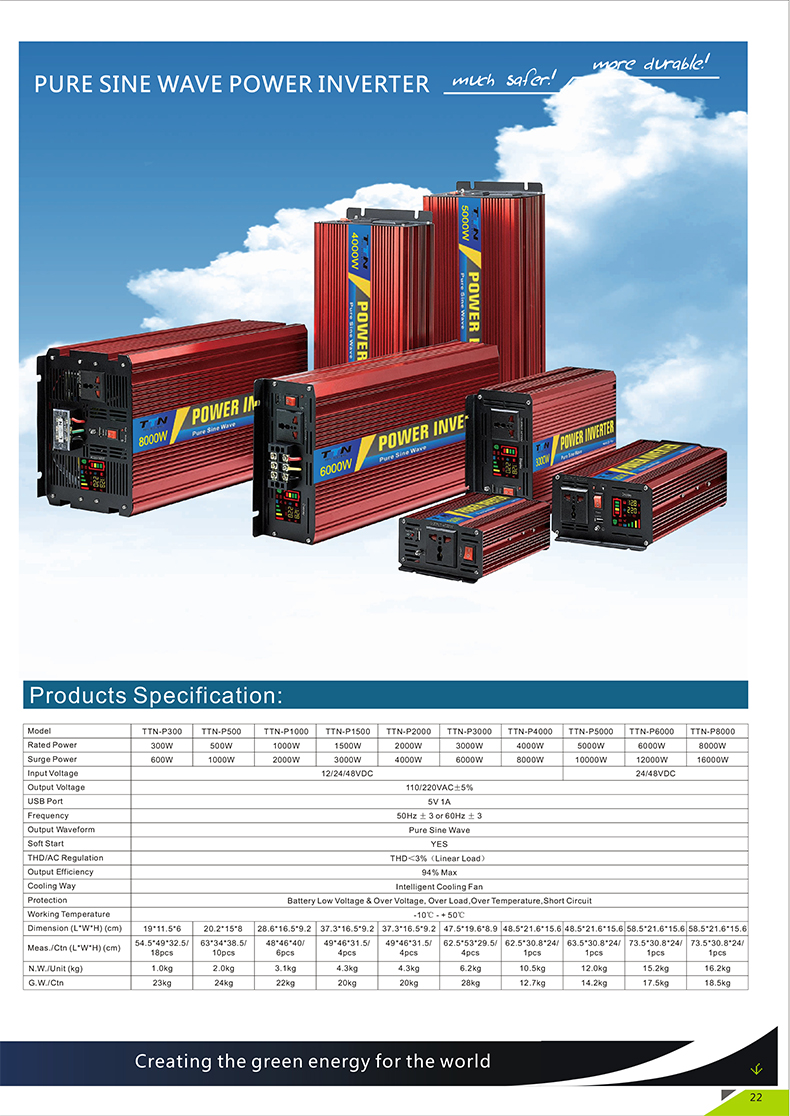
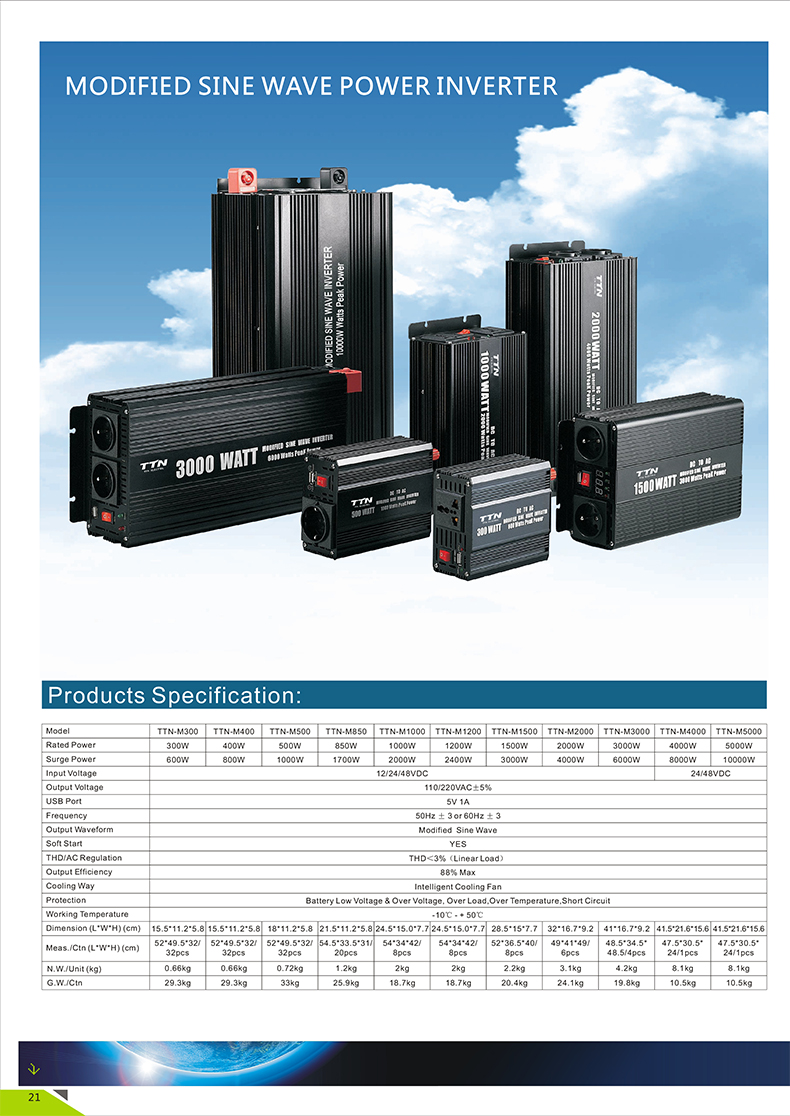
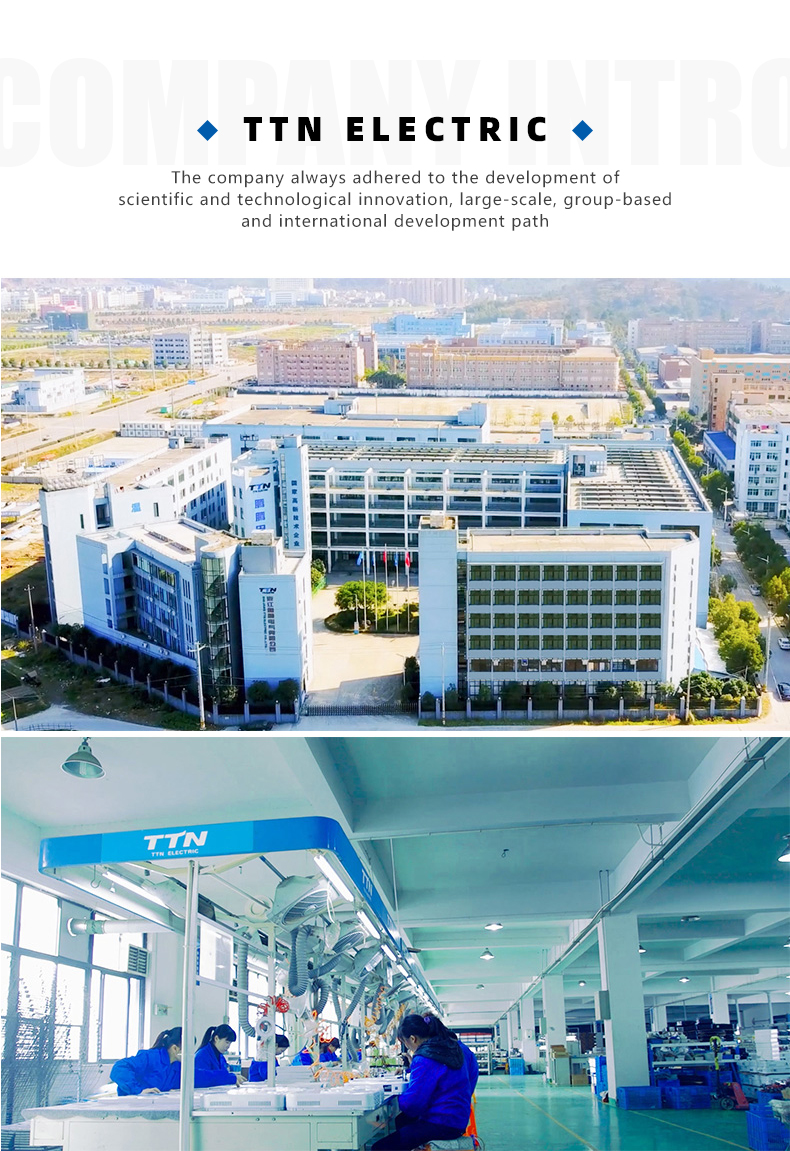
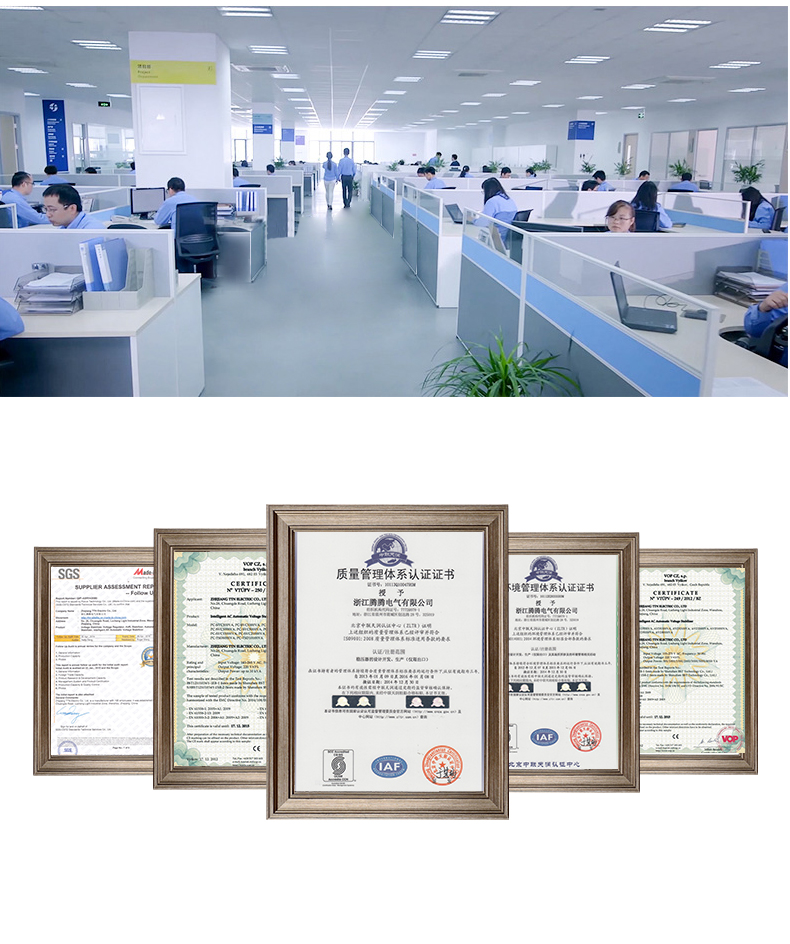
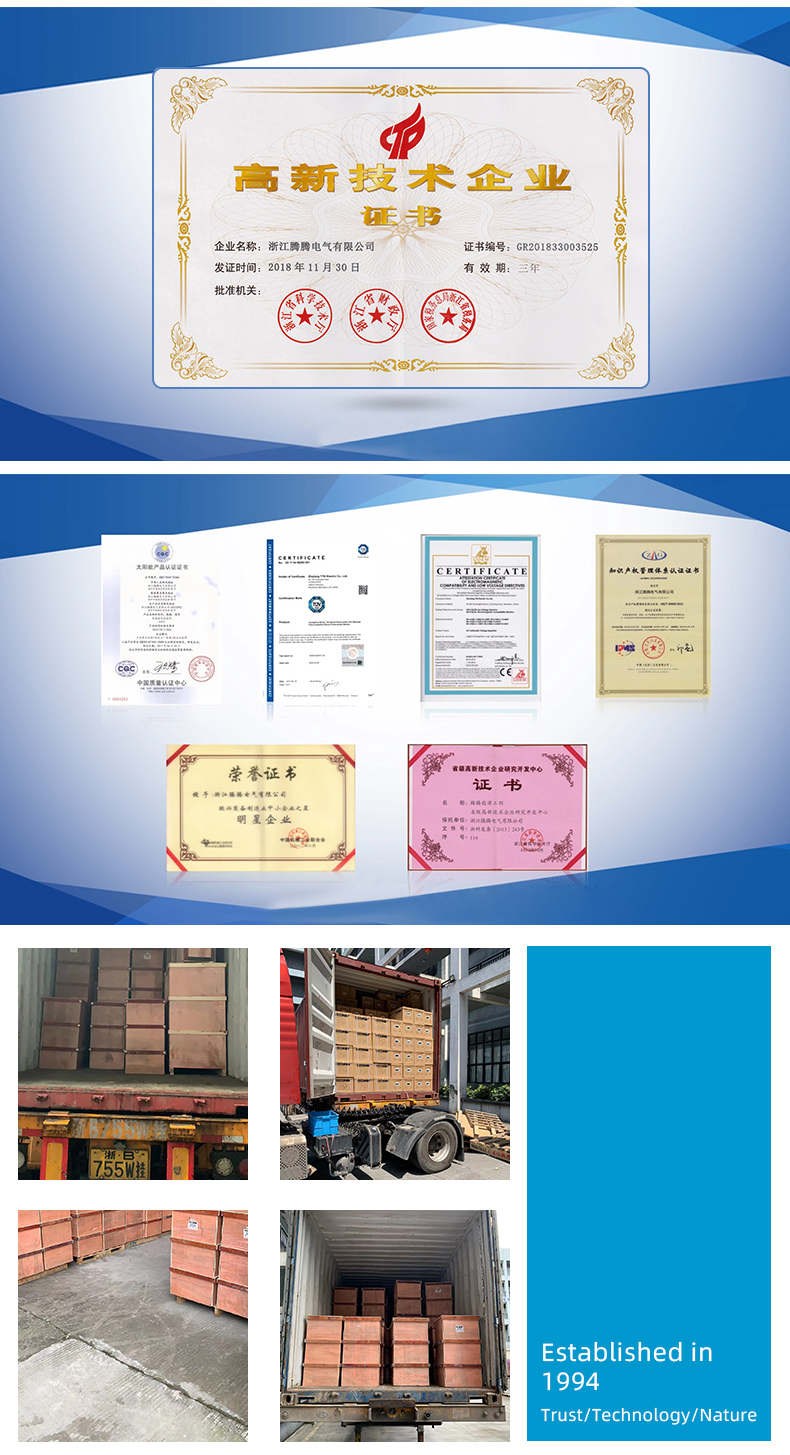
Power Inverter,Modified Sine Inverter,Modified Square Wave Inverter,Modified Or Pure Sine Wave Inverter
zhejiang ttn electric co.,ltd , https://www.ttnpower.com